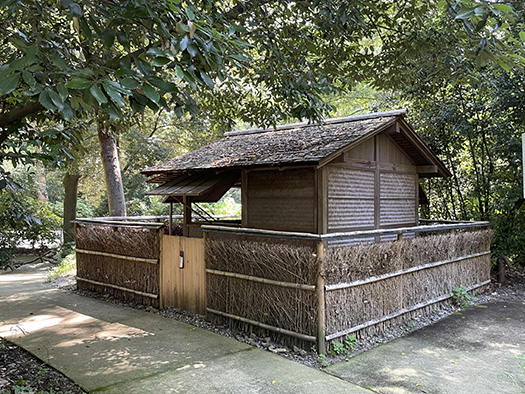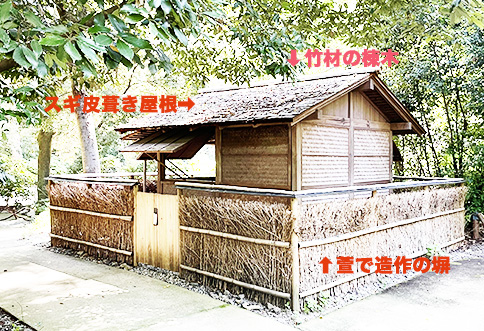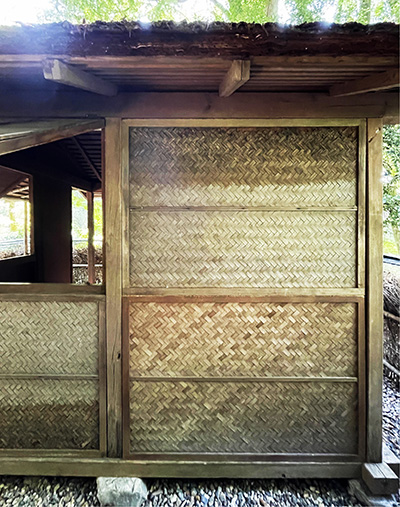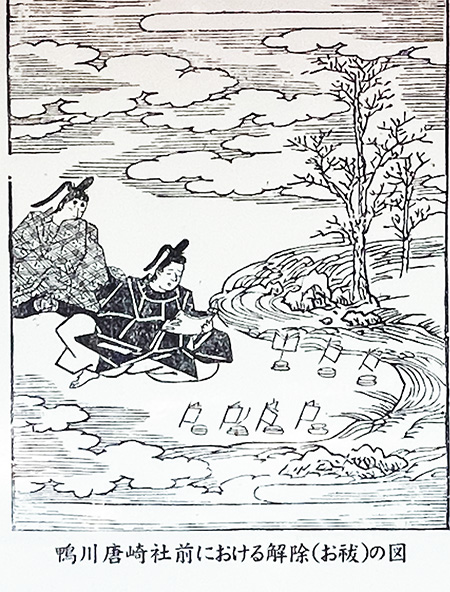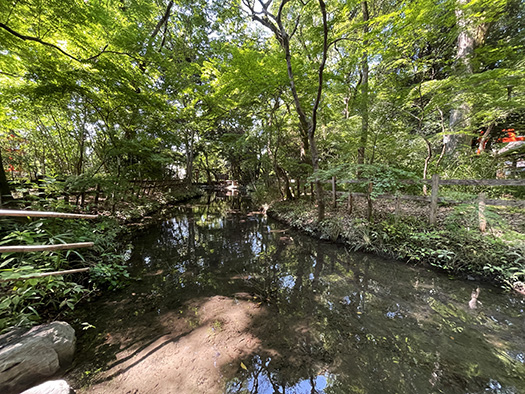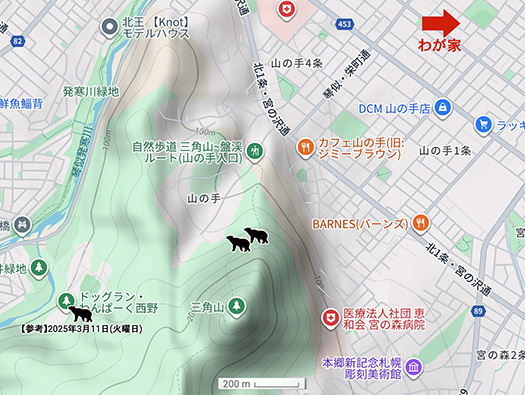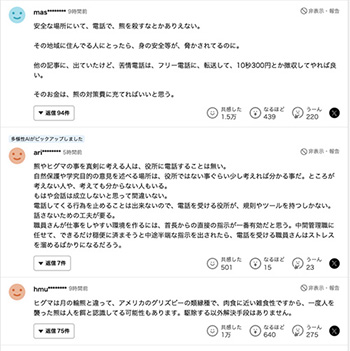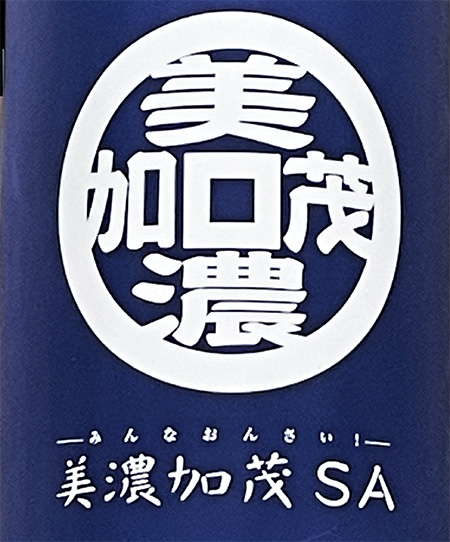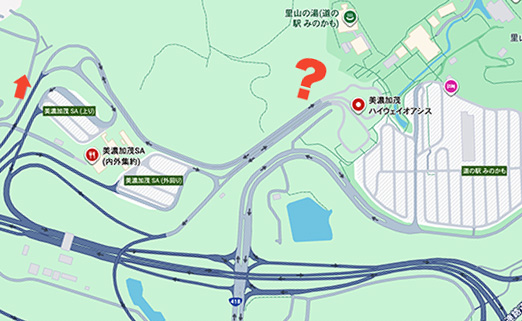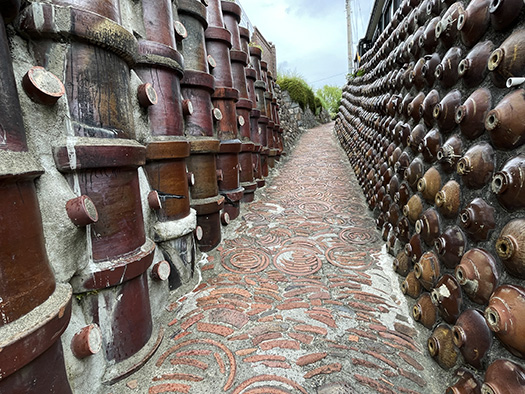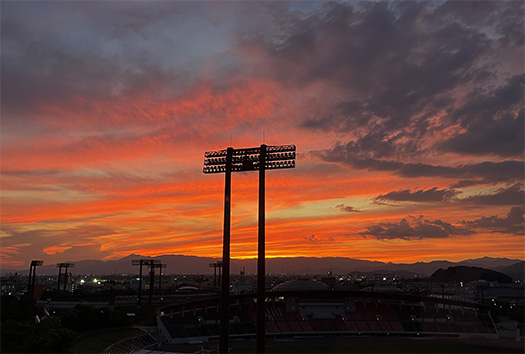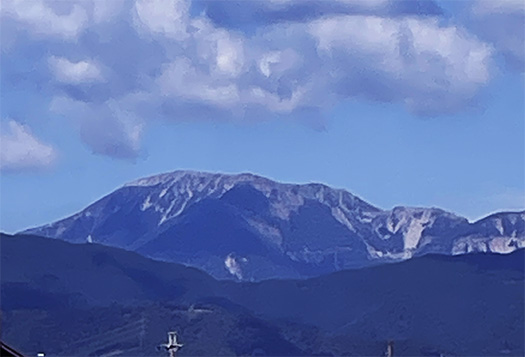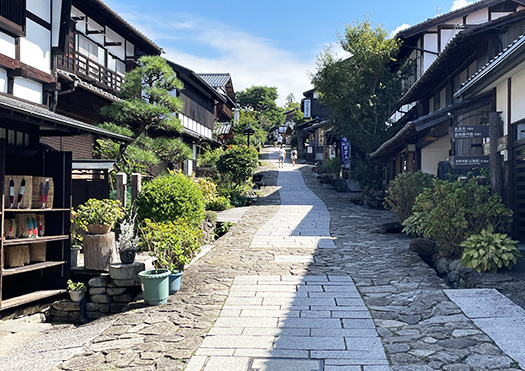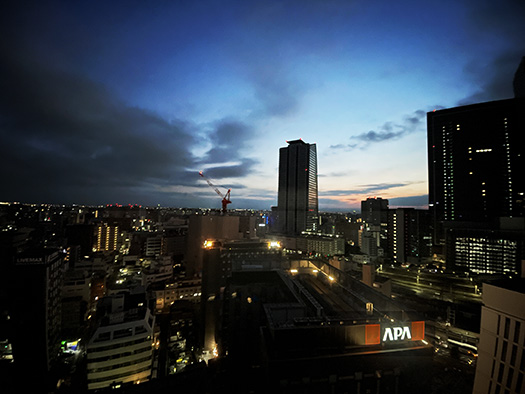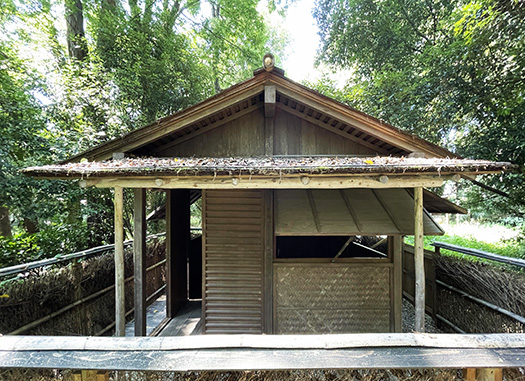
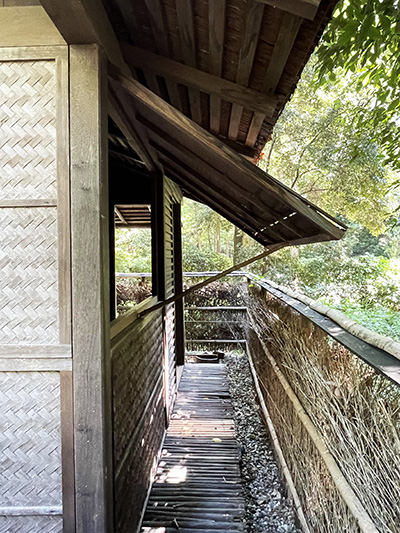
現代に生きる我々一般は、だんだん本を読まなくなってきている。いわゆる「出版」の経済規模は1995年をMaxとしてそこからほぼ半減の時期を迎えてきている。しかもその出版でも「マンガ」の占める割合がどんどん増加してきていて、いかにもな散文文学作品というものはひょっとして絶滅危惧文化になる可能性。しかしそういう趨勢の中でもブログというSNS表現手段は生き残っていく可能性はある。・・・
一方で鴨長明が生きた時代は文学を支える経済構造は基本的に「王朝文化」。GoogleのAI解説に「平安時代の文学経済構造」と聞くと以下の回答。
〜平安時代の文学経済構造は、荘園の広がりによって貴族に富が集中し、それが文学活動の基盤となりました。特に仮名文字の普及と宮廷女房の活躍により物語や和歌が発展し、裕福な貴族の女性が書くことで文学が経済的な裏付けを得て、現代に続く「王朝文化」の形成につながりました。〜
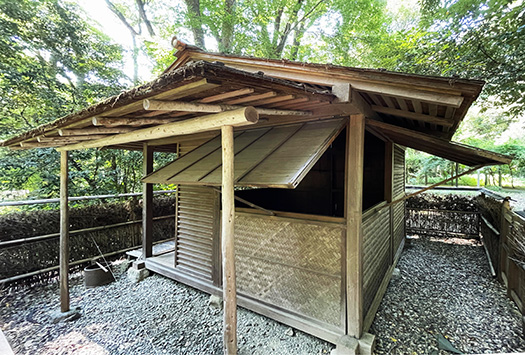
そういうなかで飛鳥時代以来の「漢字導入」に伴う「咀嚼期」として大和コトバが「かな」文字の発展によって民族オリジナルの作品創造に向かっていった。平安時代末期、そういった文化素地のなかで1175年、かれ鴨長明21歳の時に「高松女院歌合せ」に和歌を献じて大きく注目を集めたとされる。今日、和歌という文学形式は馴染みが薄くなってきているけれど、いかにも民族オリジナルな七五調の短文形式に、音楽的・映像的・動画的なイメージ訴求力で訴えかける文化基盤が生成していた。わたしもこういう短文文化を少し調べていて、その「創造性」に認識を深め強い興味を持ってきている。短い文章の中に多様なイメージを鮮烈に表すオモシロさ。
そういう文化世界の中で鴨長明さんは46歳時に朝廷から「和歌所の寄人」に任ぜられている。
想像するしかないが、この叙任によって平安期文学の世界での指導的「地位」が確立したのだろう。
そこから、表現の純粋な「求道者」的にこの「方丈庵」で本格的に著作活動に打ち込んだ。
源平の争乱期という「無情」な世の中で焼き討ちなどの惨禍が繰り返し勃発し、この簡易で住居場所移動の容易な住居形式にたどりついた。戦乱期適応型の生き方と住まい方、ということになるだろうか。人はその生きる時代の中で最適解をもとめて生き抜いていくということだろう。深く身に迫ってくる。
●お知らせ
拙書「作家と住空間」幻冬舎から電子書籍で発刊
お求めはAmazonで。
https://amzn.asia/d/eUiv9yO
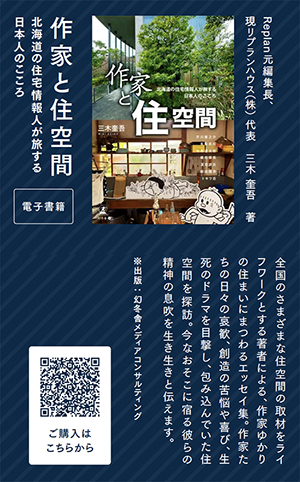
English version⬇
【The “Short-Form Culture” Production Hub in an Unfeeling Era / Kamo no Chōmei’s “Hōjō-an” -3】
Considering the economic structure of culture in the era Kamo no Chōmei lived in, contrasted with the modern world. Japanese hearts were cradled by short-form culture. …
We ordinary people living in the modern age are gradually reading fewer books. The economic scale of so-called “publishing” peaked in 1995 and has since entered a period of nearly halving. Moreover, within that publishing, the proportion occupied by “manga” is steadily increasing, raising the possibility that traditional prose literary works might become an endangered cultural form. However, even within this trend, the SNS expression medium known as blogs has the potential to survive. …
On the other hand, the era in which Kamo no Chōmei lived was fundamentally supported by a “court culture” economic structure. When asked about the “literary economic structure of the Heian period” by Google’s AI explanation, it responded as follows:
~The literary economic structure of the Heian period was based on wealth concentrated among the nobility through the expansion of manors, which became the foundation for literary activities. Particularly, the spread of kana script and the active participation of court ladies fostered the development of narratives and waka poetry. Literature gained economic backing through being written by wealthy noblewomen, leading to the formation of the ‘court culture’ that continues to this day.”
Within this context, Yamato Kotoba (the native Japanese language) underwent a period of assimilation following the introduction of Chinese characters since the Asuka period. This assimilation period saw Yamato Kotoba evolve through the development of kana script, moving towards the creation of original national works. By the late Heian period, within this cultural foundation, in 1175, when he was 21 years old, Kamo no Chōmei gained significant attention by contributing waka poems to the Takamatsu-nyoin Poetry Contest. Today, the literary form of waka has become less familiar, but a cultural foundation had been established that appealed through the uniquely native seven-five syllable short verse form, possessing a powerful ability to evoke musical, visual, and cinematic imagery. I too have been researching this culture of short texts, deepening my recognition of its “creativity” and developing a strong interest. The fascination lies in how diverse images can be vividly expressed within such concise writing.
Within this cultural world, Kamo no Chōmei was appointed by the imperial court at age 46 as a “poet of the Waka Office.”
We can only imagine, but this appointment likely established his leading “position” within the literary world of the Heian period.
From there, as a pure “seeker” of expression, he devoted himself fully to writing at this “Hōjō-an” hermitage.
Amid the “merciless” world of the Genpei Wars, where disasters like arson raids repeatedly erupted, he arrived at this simple dwelling form, easy to relocate. It represents a way of life and dwelling adapted to times of war. People seek the optimal solution within the era they live in to survive. It strikes a deep chord.
●Notice
My book “Writers and Living Spaces” published as an e-book by Gentosha
Available on Amazon.
Posted on 9月 11th, 2025 by 三木 奎吾
Filed under: 未分類 | No Comments »


